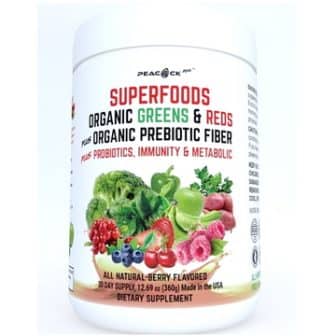How to Steam Butternut Squash for Extra Nutrition and Taste
 There is a method for cooking butternut squash that retains the most vitamins, minerals, antioxidants and other nutrition when you eat them.
There is a method for cooking butternut squash that retains the most vitamins, minerals, antioxidants and other nutrition when you eat them.
This way of preparing butternut squash is also quicker and simpler than any other I’ve tried. Personally, I think it tastes the best too. Here’s how to do it.
Selecting Butternut Squash
Choose butternut squash that are relatively heavy for their size and have a bright and consistent color to the skin.
The stem should be very firm to touch with no discoloration where it meets the skin. Also, avoid any bruises, cracks, heavy scarring or mold around the stem of the squash.
Once you’ve selected your butternut squash, it can be stored for at least a month, usually for two, in a cool, dry and dark spot. I find a cupboard away from other perishable foods to be best for squash storage.
 Magnesium L Threonate (Magtein) | Highly Bioavailable Form for Healthy Sleep Habits and Improved Cognitive Function + Memory | 2,000 mg, 100 Capsules, Best Value
Magnesium L Threonate (Magtein) | Highly Bioavailable Form for Healthy Sleep Habits and Improved Cognitive Function + Memory | 2,000 mg, 100 Capsules, Best Value
Different Cooking Options
Many people cut up their butternut squash into cubes and boil it to cook it. Unfortunately, this will leach away some of its beneficial vitamins and other nutrients into the boiling water and down your kitchen sink.
Roasting butternut squash at a moderate temperature is better, but it takes a long time and the higher the temperature goes the more chance of destroying valuable nutrition like vitamin C.
The healthiest way to cook a butternut squash is to steam it. The steaming method of cooking squash can be done quickly, it preserves the highest amount of vitamins and other nutrition and leaves you with great tasting butternut ready for most recipes.
How to Steam Butternut Squash
To start steaming your squash you’ll need a food steamer. If you don’t have one then a universal steamer is an easy and inexpensive option that fits over most sized saucepans.
Prepare your butternut squash for steaming by placing it on a chopping board and cutting it in half with a strong knife. Avoid trying to cut through the tough stalk itself. Cutting just to one side is easier.
Once it is halved, pull out the seeds with your fingers and keep them aside if you’d like to cook them up while the squash is steaming.
You can lightly fry butternut squash seeds with their hulls in a little coconut oil and seasoning for a few minutes. They make a tasty appetizer and are full of vitamins, minerals, healthy fatty acids, phytosterols and are an outstanding source of fiber.
With your squash now split in half and the seeds removed, cut it into sections, around 2 inches wide and long enough to fit in your steamer. This helps to steam it quicker and makes it much easier to remove the bright orange pulp from the skin in the next step.
When it’s all cut up put the butternut squash into the steamer. Fill the saucepan a quarter full with water and steam them, with the lid on and at a medium heat, for 10 to 12 minutes.
Your butternut squash is fully steamed and ready to eat when a fork goes easily through the center of one of the bigger strips to the skin.
Can You Eat Butternut Squash Skin?
Butternut squash skin is edible and actually quite healthy as it’s full of fiber and many of the best antioxidants in butternut are found just under the skin.
Steaming butternut squash will make the skin quite soft and this method of cooking them is the best if you don’t mind eating it.
While you can eat butternut squash skin, you may want it off for certain recipes or fussy eaters. Here’s the simplest way I’ve found to separate the squash pulp and skin.
Transfer the steamed strips to a chopping board and let them cool for a minute or two. Then, using a tablespoon, simply scoop out the bright orange pulp off the skin and into a bowl.
It may take a little practice to get quick at preparing your squash like this. But after a few tries you should be able to cook butternut squash in around 15 minutes, all ready to use in healthy butternut soup recipes like this.
In Summary
Butternut squash is a great tasting and very nutritious alternative to potatoes. Choose brightly colored squash and cut them into 2 inch wide strips for quick steaming.
10 to 12 minutes in a steamer saucepan will give your butternut squash a soft and rich flavor, whilst still retaining its important vitamins, minerals and other nutrients. You can even eat the skin when you steam butternuts in this way.
Now that you know how to cook butternut squash for the most health benefits, keep it in mind the next time you’re out shopping for vegetables. I’d appreciate hearing what you think in the comments below if you try this cooking method yourself.
 Tired All the Time and Low on Energy? | Alpha GPC Supports Cognitive Function, Memory, Motivation, Stamina and Strength | USA Made, Third-Party Tested. Lowest Price
Tired All the Time and Low on Energy? | Alpha GPC Supports Cognitive Function, Memory, Motivation, Stamina and Strength | USA Made, Third-Party Tested. Lowest Price

From Food, Folks and Fun
As an Amazon Associate I may earn from qualifying purchases at no cost to the consumer | Information presented here is for educational purposes only. The content is not intended to be a substitute for professional advice. Statements made have not been evaluated by the FDA and are not intended to diagnose, cure, treat or prevent any condition. Consult your GP before making dietary changes or taking supplements.




